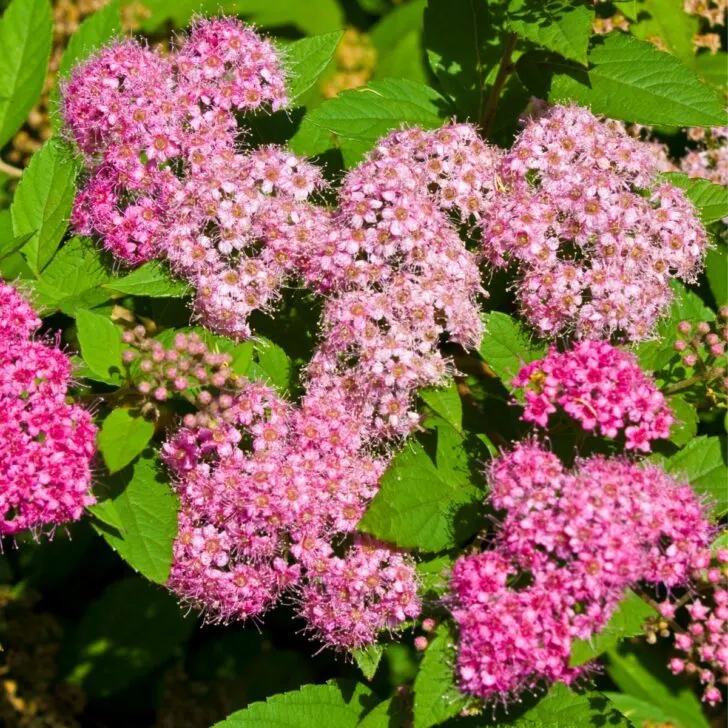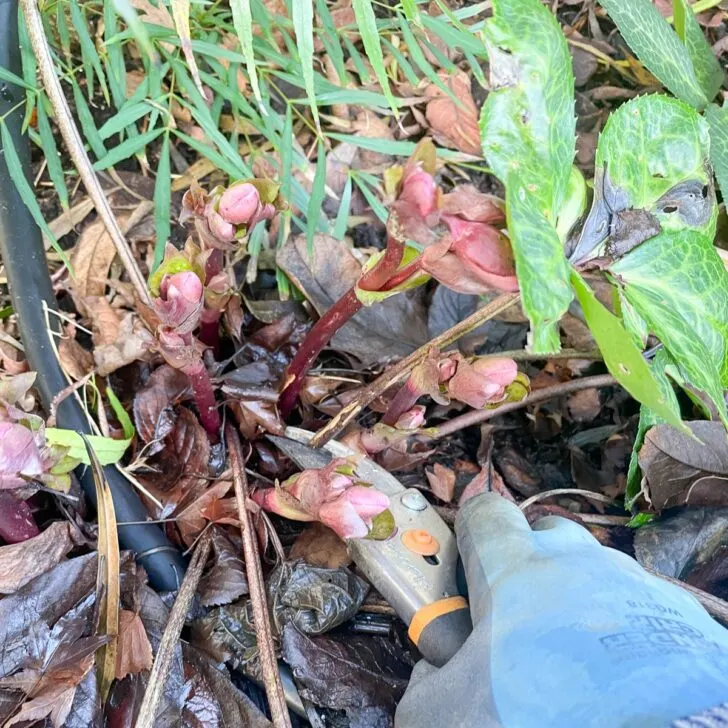Want to learn how to prune a Japanese maple, but don't know where to start? This tutorial will help you create a healthy, beautiful tree!
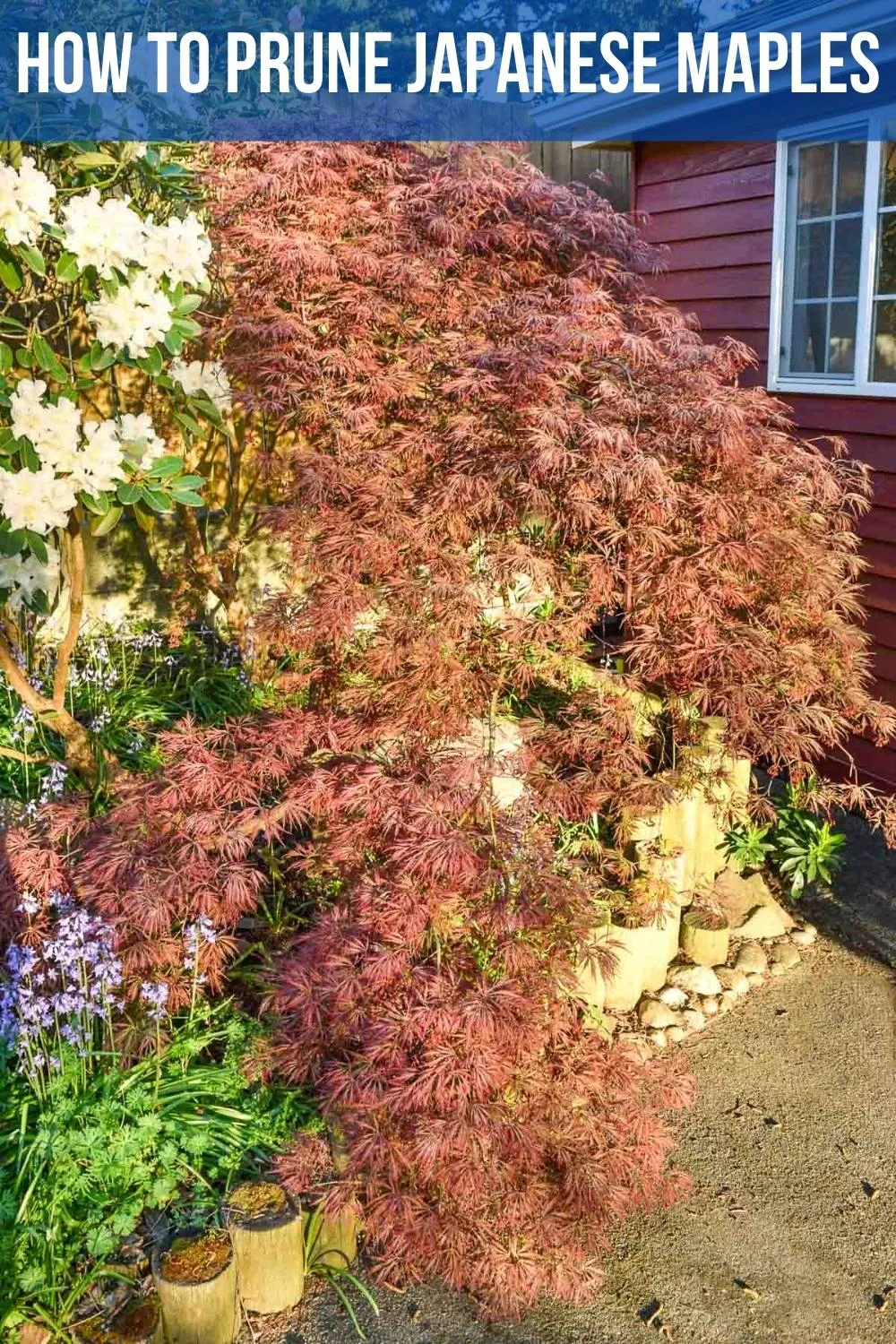
The weeping Japanese laceleaf maple in our backyard needed some serious help. Our house was a rental before we bought it, so no one had taken care of this tree properly for years!
Trimming ornamental trees like these can be a little nerve-wracking, because you don't want to give it a bad haircut! I'll walk you through the entire process, so you end up with a beautiful, healthy tree!
This post contains affiliate links for your convenience. Purchases made through these links may earn me a small commission at no additional cost to you.
When to Prune Japanese Maples
Spring is the perfect time to prune Japanese maple trees, before the buds break into leaves. It's easy to identify the dead branches because they won't have any buds, and they're lighter gray in color.
With the leaves out of the way, you're able to see the shape of the tree itself and guide it into the look you want in summer. The tree will be able to put more energy into growing the branches you want to keep!
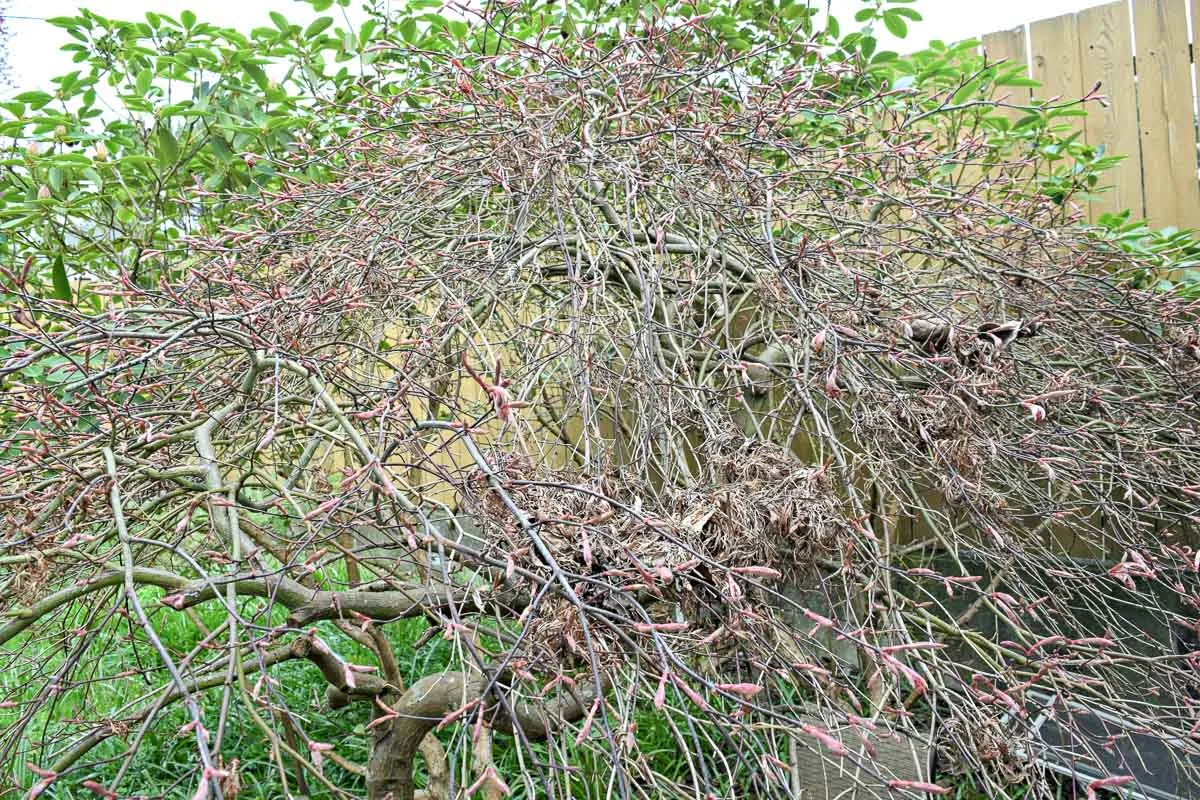
You can also prune in late fall or winter, after the leaves have dropped and it's easy to see the structure of the tree.
Japanese Maple Pruning Tools
Japanese maples are prized for their delicate branch structure, so there's usually no need to break out the power tools when pruning. A few simple hand tools are all you need to shape your tree. You can learn more about pruning tools and how to use them here!
Small branches less than ¼" in diameter can easily be snipped with handheld bypass pruning shears, For extra leverage on branches up to an inch thick, you'll want to switch to bigger bypass loppers.
For major branches, you will want to get a pruning saw. When using the saw, be sure to make cuts both above and below the branch at the collar. If you try to saw from the top only, it will tear the bark underneath when the heavy limb gives way.
How to Trim a Japanese Maple
Cut off dead branches first
This poor tree is a mess! The canopy is so dense, all the branches underneath are dead from lack of sunlight. Removing all the dead branches first will allow you to see the healthy structure and make it easier to decide which ones to prune next.
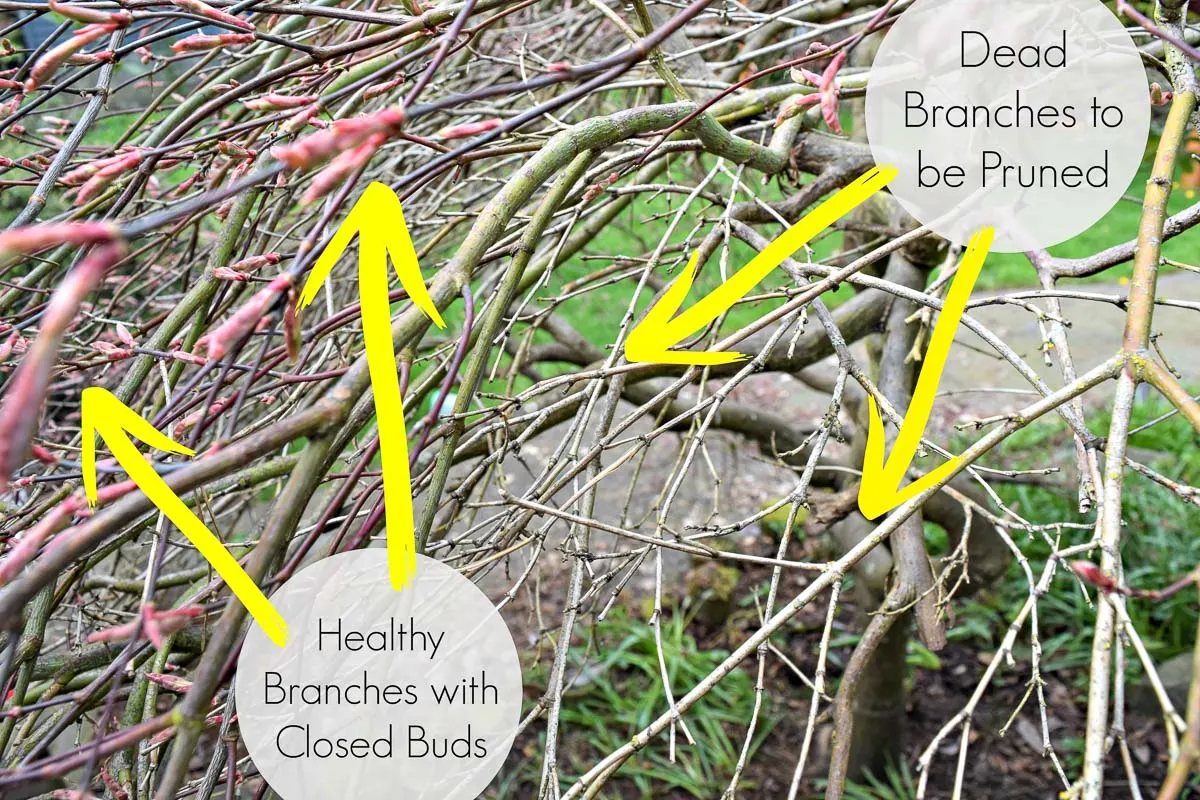
Cut at the junction between the dead branch and the closest healthy one, making sure to leave the "collar" intact. Leaving this little stub will allow the tree to heal quicker. Smaller branches will just snap right off, but larger ones should be cut with sharp bypass pruning shears.
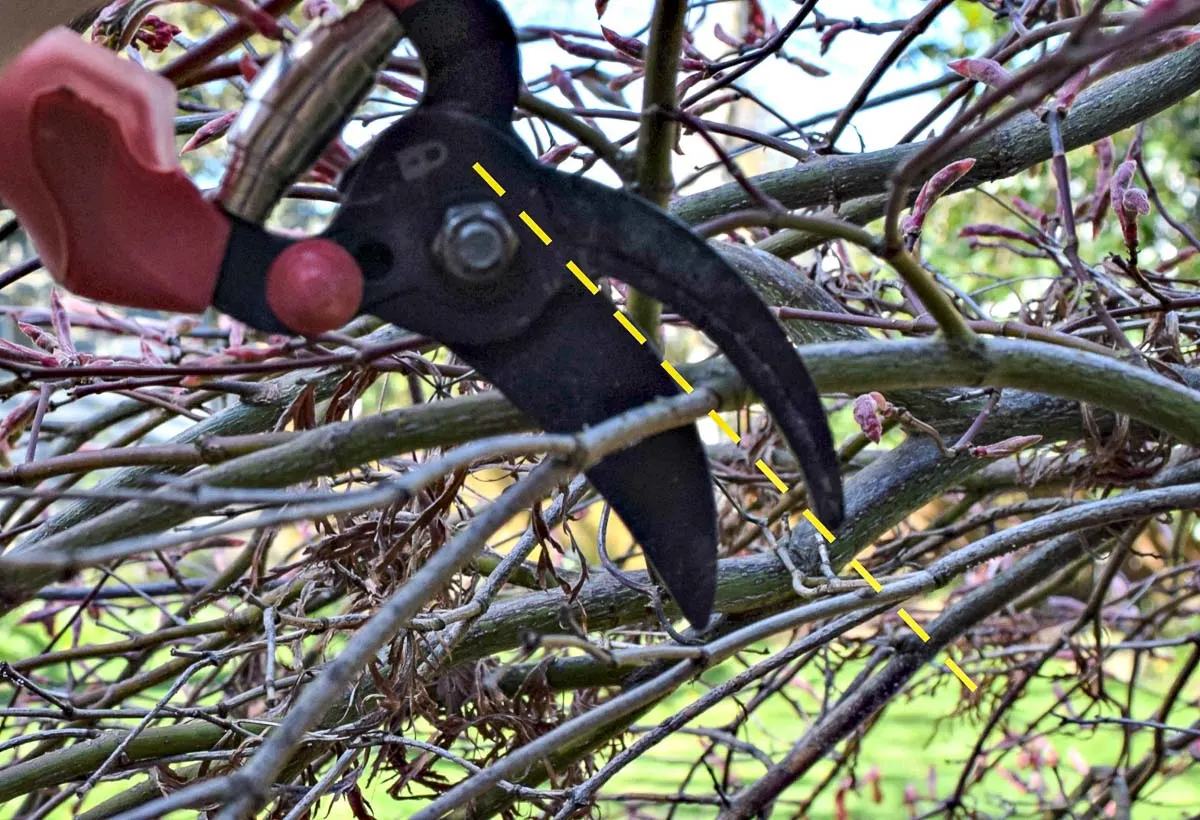
Remove crossing or rubbing branches
After all the dead branches have been cleared away, you will want to look for any branches that are crossing and rubbing against each other. As the branches move in the wind, this rubbing may create wounds in the bark that can invite insects or disease to infect the tree.
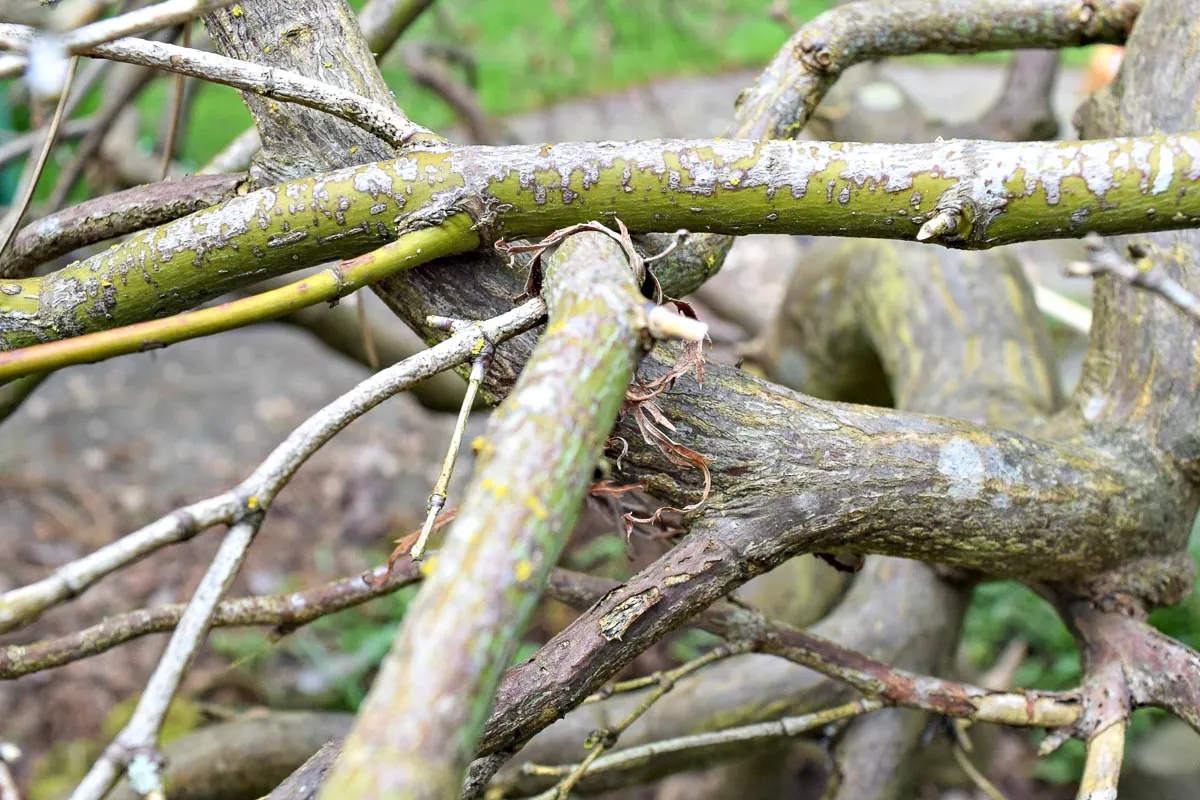
Try to visualize how the tree will look with each branch removed, and keep the one that you think would look best. If there's obvious damage or a divot in on one of the branches, that's the one you should cut.
Prune branches that cross the midline
To keep the form of a weeping Japanese maple tree, you should prune branches that cross the midline of the tree. The top branch that was rubbing against the other in the photo above is also crossing the midline, so it was an easy decision to remove that one!
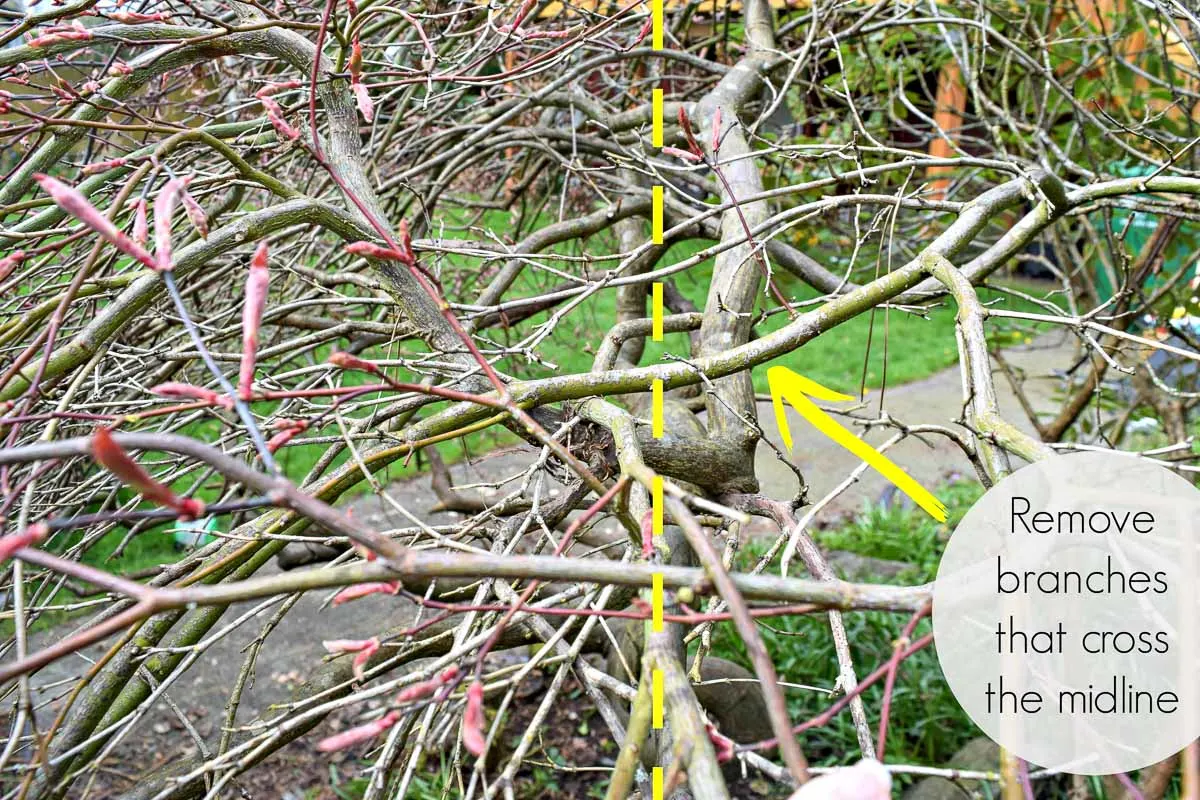
Thin and shape the tree
Now that the problem branches have been cut, you can move on to the aesthetics of the tree. Take your time with this, and only make a few cuts at a time. You can always prune more, but you can't add branches back on!
Some things to take into consideration when shaping your Japanese maple tree:
- Remove branches that are shooting straight up or growing at a right angle.
- Work from the bottom up and from the inside out.
- Create layers or "clouds" of branches and remove ones that are interrupting those layers.
- Keep enough leaves covering the trunk to protect against sunscald.
- Look at the tree from all angles. Removing a branch on one side may make it look worse on another side.
Shaping a Weeping Japanese Maple
A weeping Japanese maple should have branches that flow like a waterfall from the top to the ground. It's much easier to see this effect after some of the leaves have started to grow in, so you might want to wait a few weeks after the initial pruning to shape it.
Cut away any branches that are sticking out at an odd angle. They should all be flowing down towards the ground. My tree only has leaves on one side, so it looks like a waterfall spilling onto the walkway.
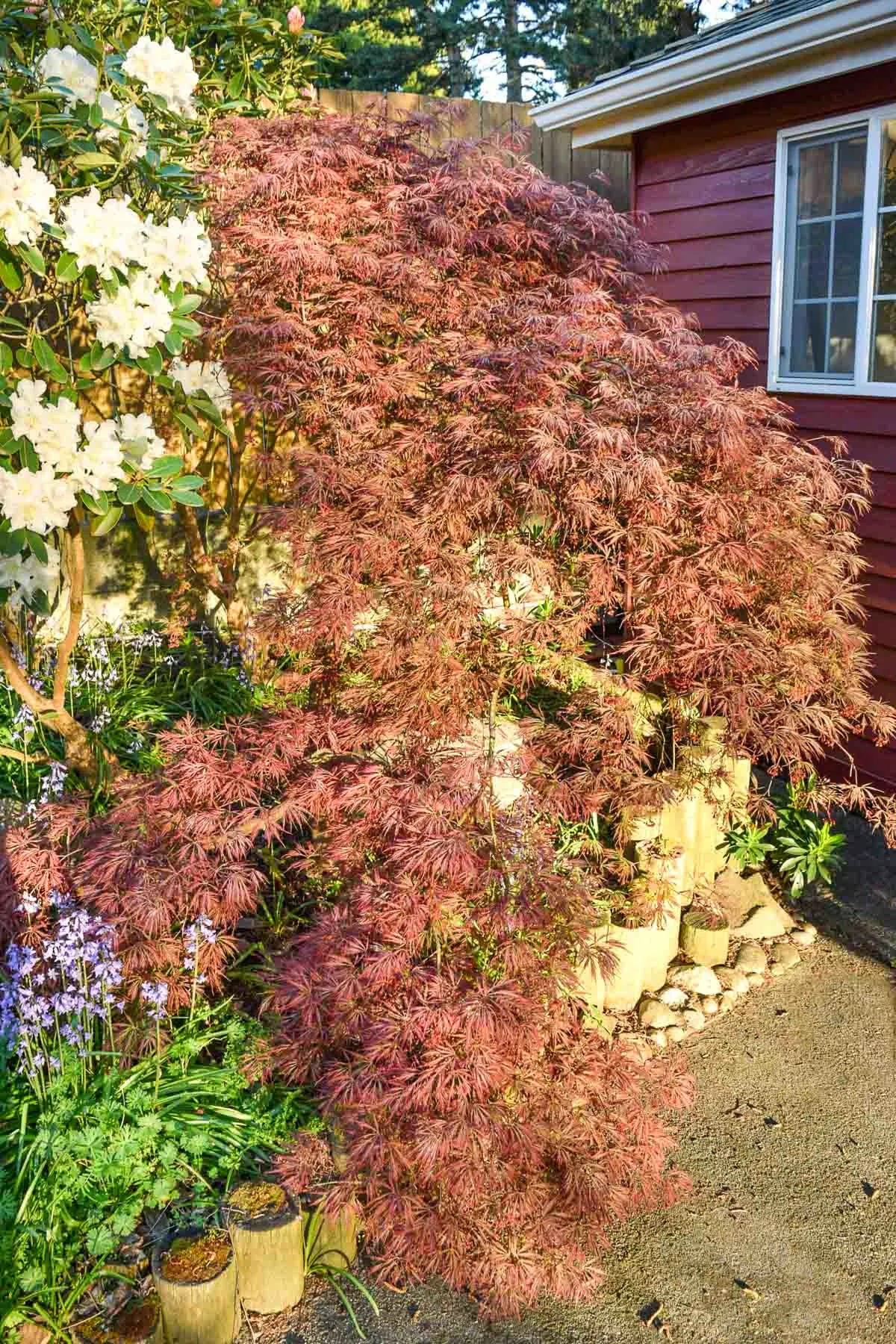
Trim any branches that are touching the ground to prevent insects from crawling up. I have to give this tree a haircut several times a year at the bottom!
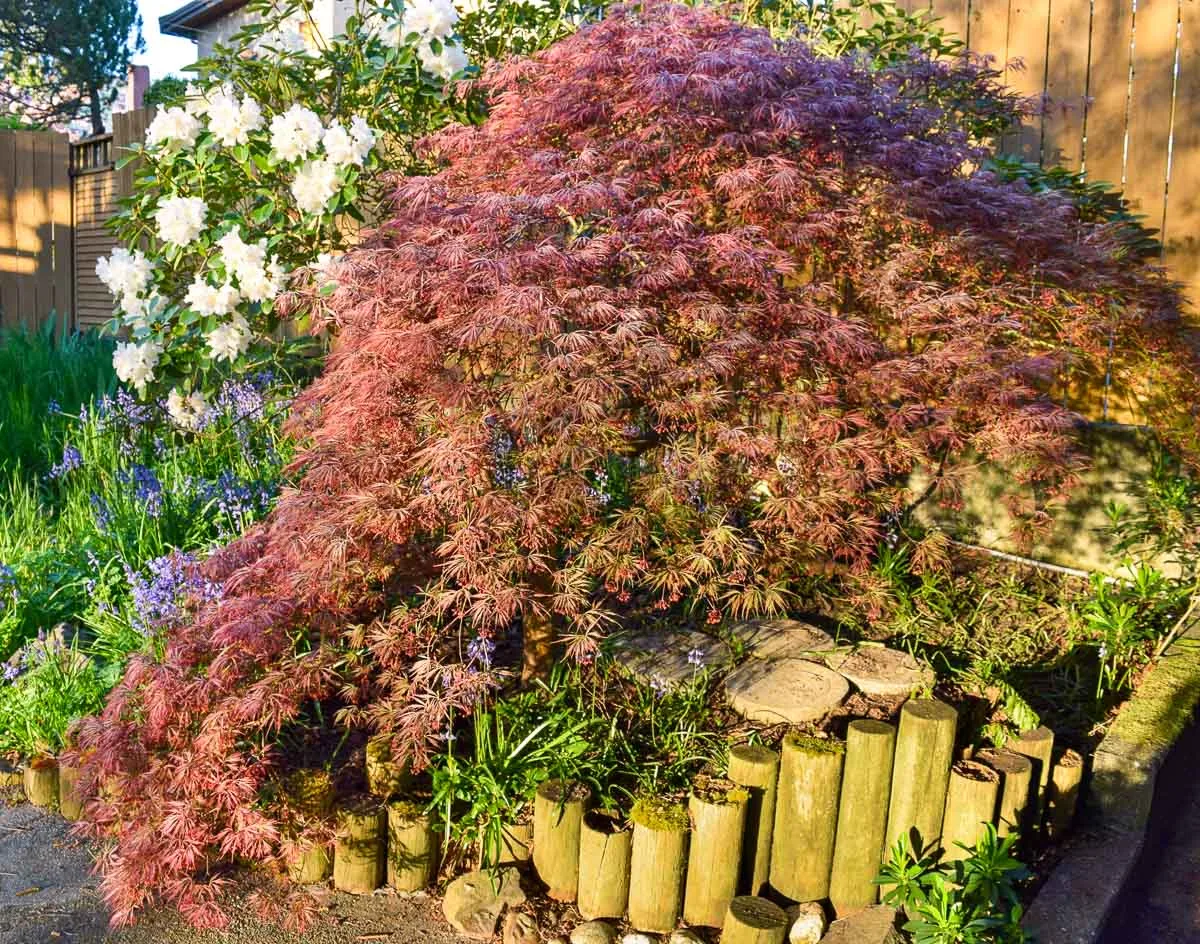
Trimming an Upright Japanese Maple
We have a larger upright Japanese maple that frames the entryway to our front yard. It has a distinct V shape, which makes it pretty obvious to see which branches to trim.
You can see that there's one branch that has decided to break all the rules! It's growing at a right angle from the trunk, crossing the midline and rubbing against the other branches. Even though it's a pretty substantial branch, it's gotta go!
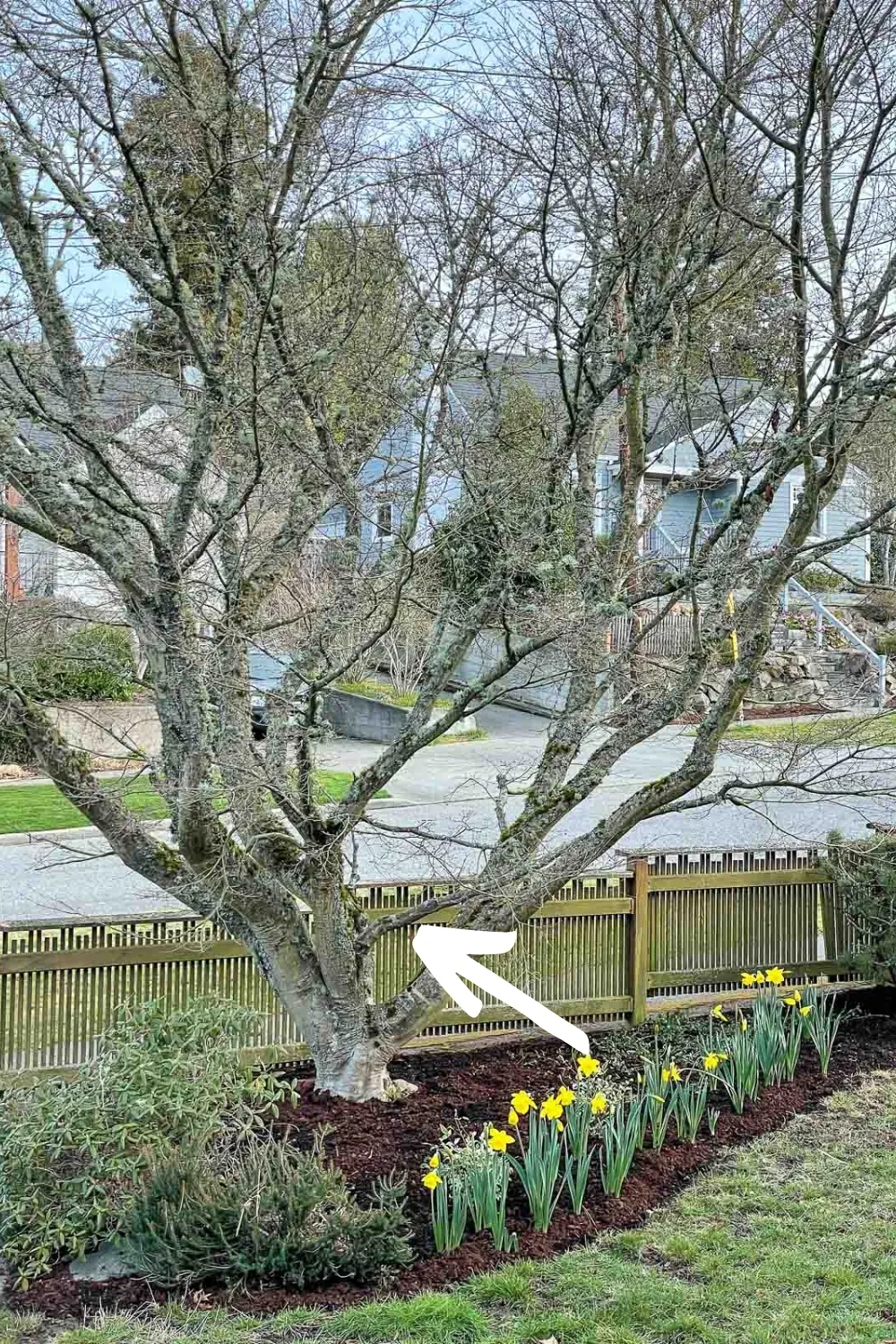
I used a pruning saw to remove the offending branch. With a branch this thick, you'll want to cut from the underside first before sawing through the top. This will prevent the branch from breaking under the weight and peeling down the trunk before the cut is complete.
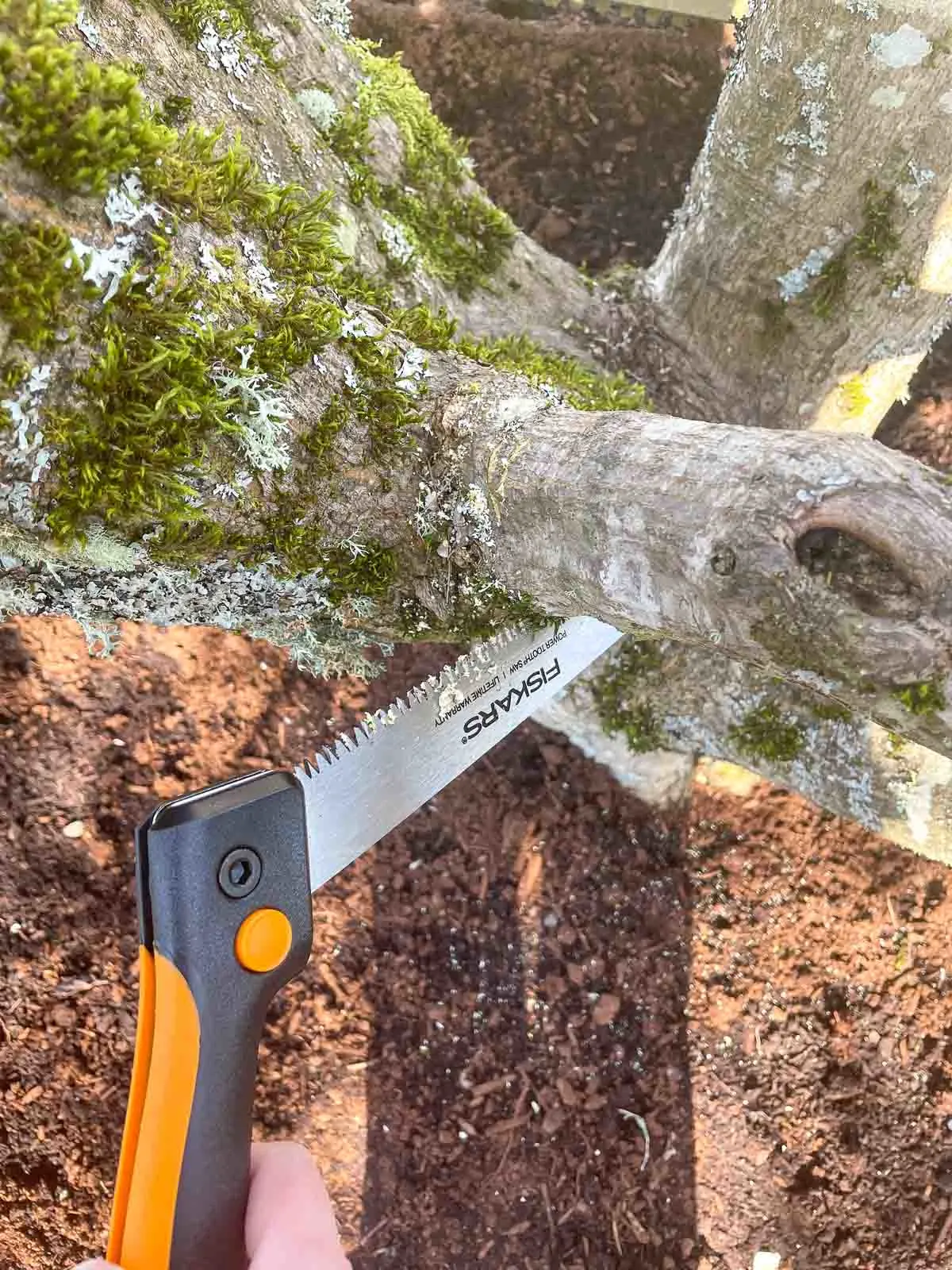
Just that one cut made the tree look much more balanced and symmetrical! I cleaned up a few more branches around the trunk to open it up and allow for better air flow. This will also help the tree put more energy into growing the upper branches that create a beautiful canopy in summer.
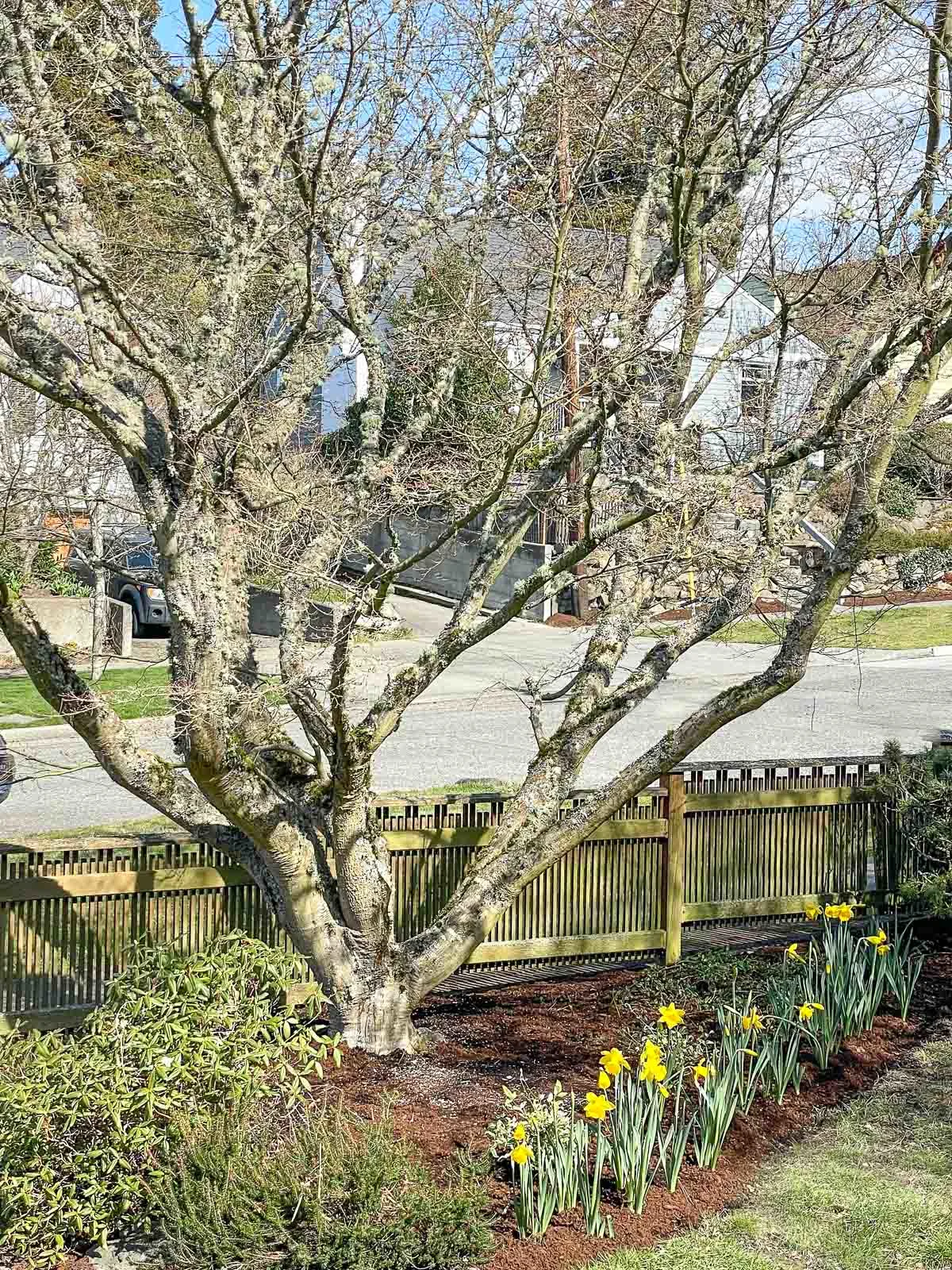
There are a few more branches that I'll be keeping my eye on this spring, and trim them if they become a problem. The weight of the leaves can change the shape of the tree, so it's a good idea to make fewer cuts at a time and live with it for a while before hacking off more.
If you're looking for a good ground cover that will thrive under your tree, I recommend Pachysandra (also known as Japanese spurge). This evergreen pairs well with Japanese maples, and will slowly spread to fill in the area and block out weeds. I recently planted some under this tree, and I'm hoping it will prevent some of those little tree seedlings from popping up every year!
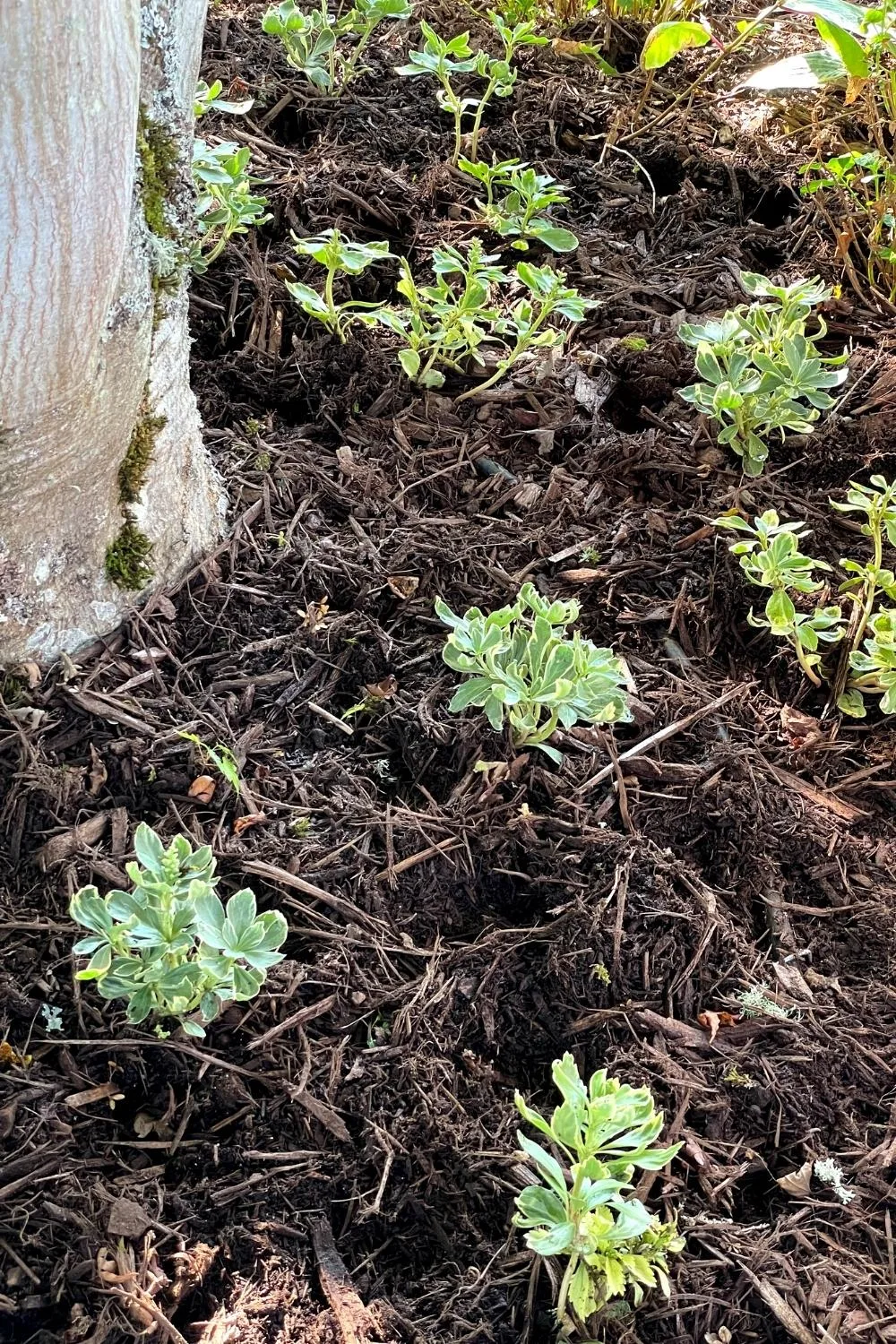
Enjoy your beautiful Japanese Maple!
Japanese maples are my favorite trees, and I was so happy to see two beautiful specimens when we bought this house. With a little careful trimming and pruning, I hope to keep them looking gorgeous for many years to come!
When my son was little, he loved to use the weeping Japanese maple as his "hideout." I put a little chair under the canopy and placed a few stepping stones underneath to keep the legs from sinking into the soil. So cute!
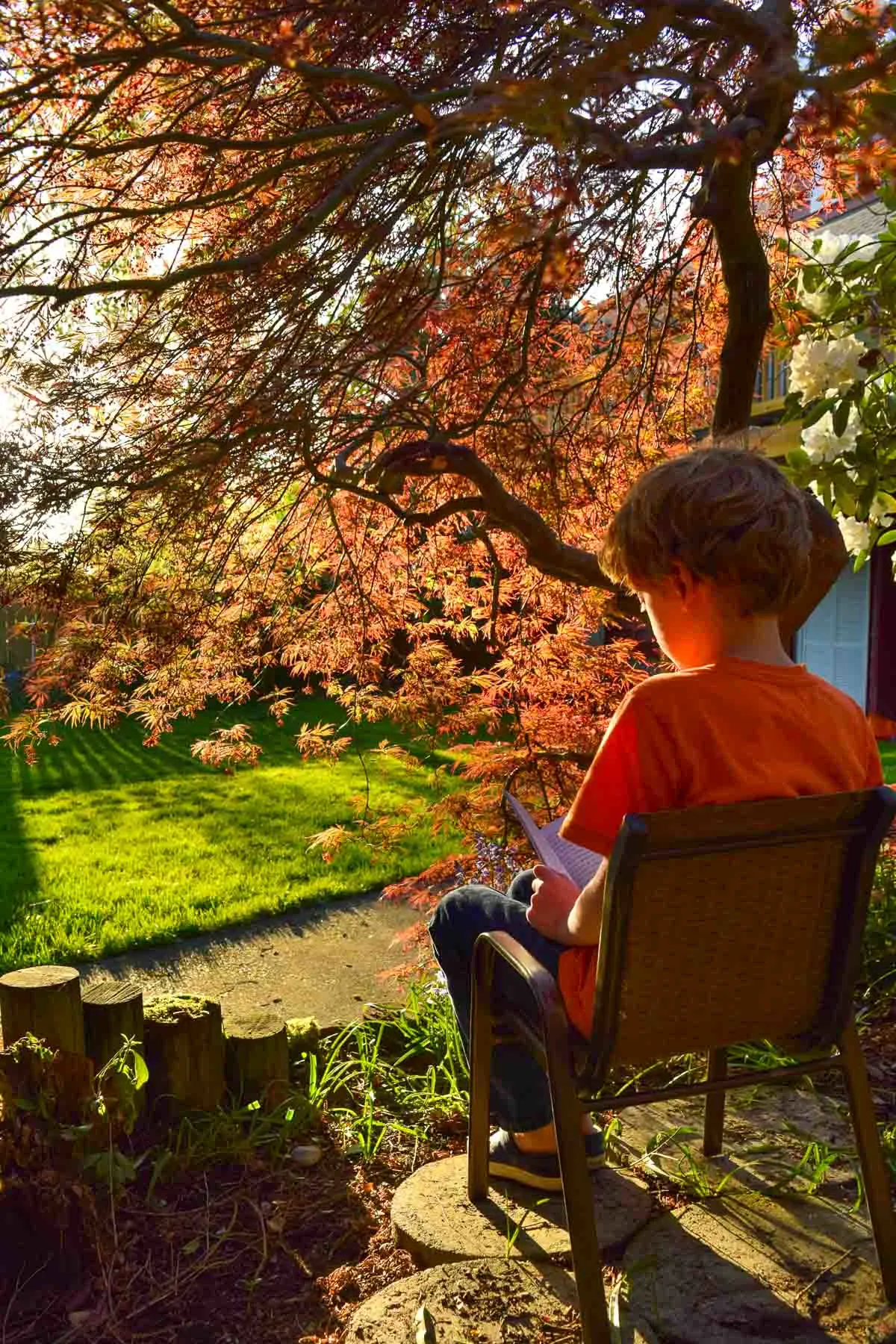
I hope these tips will help you prune your Japanese maple tree with confidence! With a little upkeep, these wonderful trees can create a beautiful backdrop to your garden.
Check out these other pruning articles!

